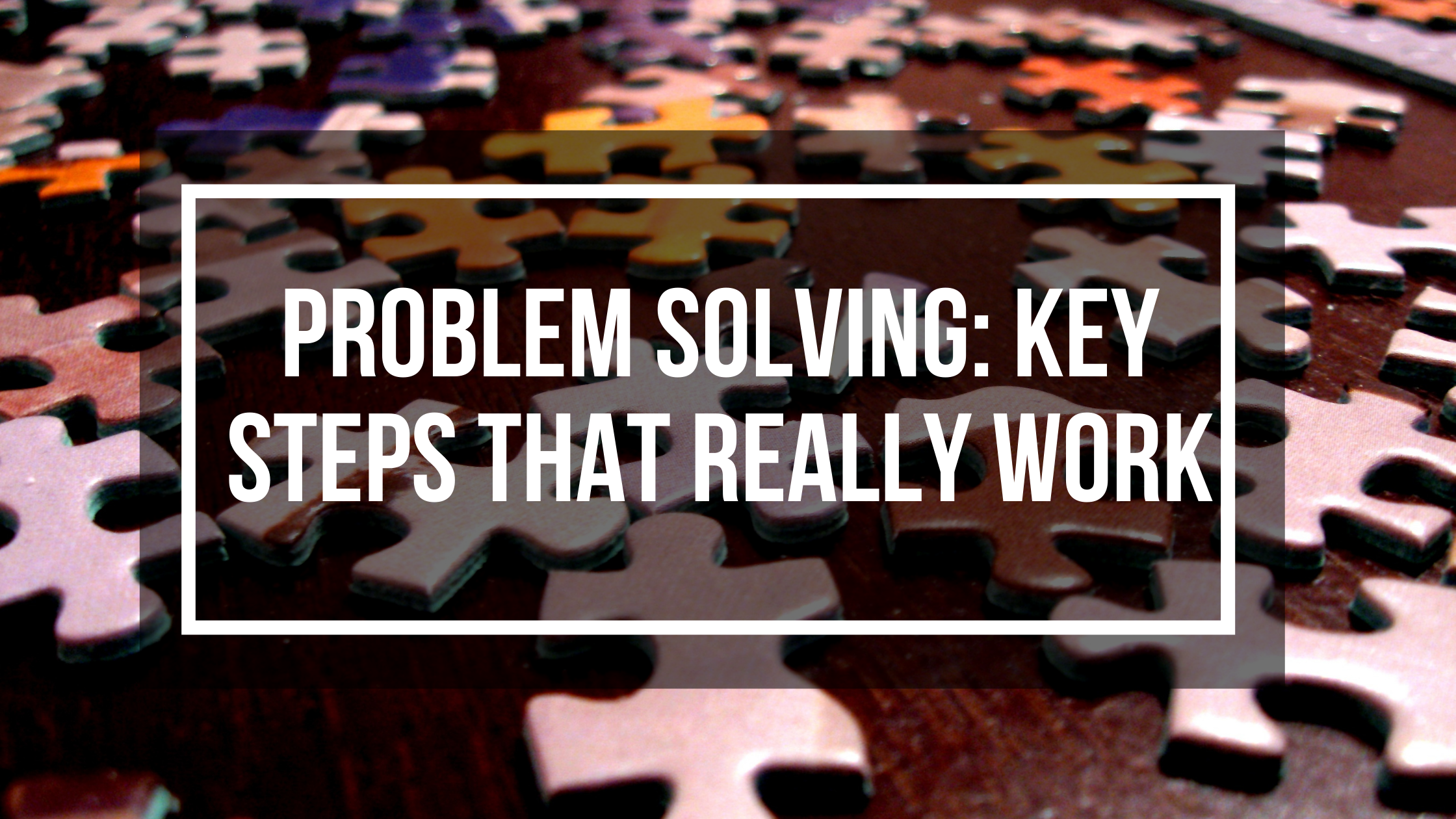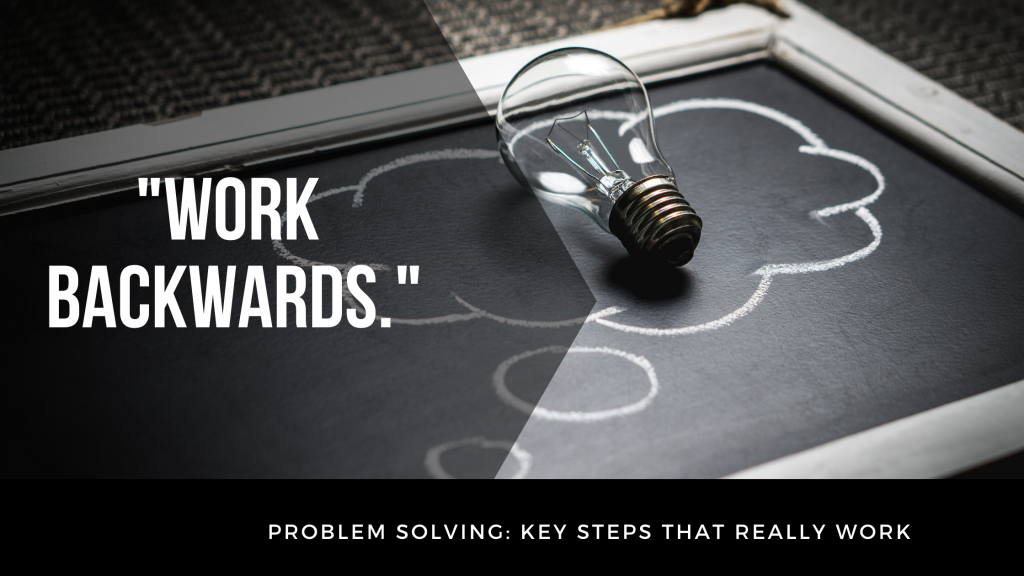Problem Solving: Key Steps That Really Work

Problems arise daily in our lives, at home, at work, in our personal lives – everywhere! The difference between solving problems in a logical, comprehensive way that gets results and just dancing around the problem is in the way you face them: head-on, with a well-thought-out plan that leaves little room for doubt or hesitation.
Below are 7 essential steps to figuring out how to solve problems to get real results. However, before we go on, let’s define exactly what problems and solutions are. A problem is “a question raised for inquiry, consideration, or solution,” according to Merriam-Webster dictionary, while the definition of a solution is “an action or process of solving a problem.”
One of the most important factors to have while searching for solutions is that there must be a clear-cut goal of what you want out of your problem-solving process. What do you want to achieve? What are your goals? Solving problems requires the following skills:
- a sense of readiness to face problems head-on
- creative thinking
- composure and logical thinking
- analytical thinking
- decision-making skills
Nonetheless, with that in mind, it’s important to know that not all problems have quick fixes, while some have solutions that require open-ended, intangible solutions, like coming up with strategies to end world poverty.
The second trick to have up your sleeve is to have confidence when approaching a difficult task. In addition, the way to be confident is to have a solid 7-step process to help you through any problem that comes your way.
Read on to find out more about these 7 steps:
- Put your finger on the problem. Clarify exactly what the task is. Highlight potential leading factors for the problem, as well as any sought after results. In order for this to transition smoothly, you need to gather as much information and data as you can. Use logical steps to reach accurate predictions through the clear distinction between cause and effect. This is where you define what goals you are trying to accomplish via this course of action.
- Break it down. Simplify the problem into smaller parts. In this day and age, problems have become multi-faceted and more difficult to tackle than ever before. Sometimes all you need to face a problem head-on is to break it down into smaller pieces and find the answer to each one independently before tying everything together into one big solution.

- Work backwards. Remember those mazes we did as kids? The only way to logically figure out which way was the right way was to start at the end and work backwards. Some problems require the same type of logic to reach one possible solution, or perhaps several. Start at the end of the maze and slowly try to move through the tunnels, until you’ve reached the beginning. Interestingly enough, this train of thought was the inspiration behind a number of today’s cleverest inventions.
- Brainstorm. Think up of as many solutions as you can, along with both their disadvantages and benefits. The main aim of this step is making a list of all possible ways to reach a solution to the problem at hand – no matter how ridiculous they may seem to you. Write down each idea that pops into your mind; be imaginative and creative. This is the step that will put you on the right path of finding that one perfect solution, or at least as close as you can possibly get.
- Evaluate and prioritize one main solution. Out of the list of possible solutions, there will be one that catches your eye the most. It’ll be the one that makes the most sense, with the best possible results and least amount of negative consequences as possible.
- Clarify desired outcomes. Draw out a plan of action because 9 times out of 10, the solution you pick will need fixing and adjusting before it’s a perfect fit. This is the time for planning, executing, and seeing if it’s reached that level where it can actually solve the problem. Bare in mind that most solutions that constant updates and fixes to make sure it keeps up with the evolving dynamics of the problem.
- Follow up. Make revisions to your solutions, in addition to the steps you took to get there. It’s important to review your decisions and the impact they have on the problem and its solution. Continuing to assess your progress will give you insight into your critical thinking skills, and further enhance your ability to move forward.






